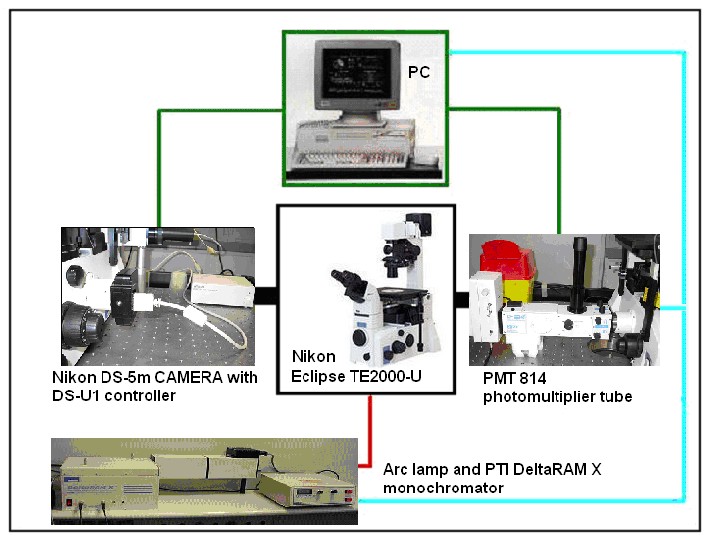Bologna University/Microscopy: Experimental Set Up
From 2007.igem.org
Guido Costa (Talk | contribs) |
Guido Costa (Talk | contribs) m |
||
| Line 15: | Line 15: | ||
| - | [[Bologna | Back]] | + | [[Bologna#Image Acquisition System | Back]] |
Latest revision as of 16:22, 26 October 2007
A schematic design of our acquisition system based on the fluorescence microscope is shown in figure.
The illumination system is composed of a 75 Watt Xenon arc lamp connected to a Photon Technology Instruments DeltaRAM X monochromator, which breaks up a single polychromatic light beam into several monochromatic light beams (with only one wavelength each). Only the selected wavelength can pass through the output port and reach the microscope.
The system’s core is a Nikon Eclipse TE2000-U inverted fluorescence microscope. For GFP image acquisition we used a B-2A filter by Nikon with an excitation band between 450 and 490 nm and the optimal emission placed at 520 nm.
The camera used to acquire images and film segments is a Nikon DS-5m with a DS-U1 controller. This one receives the acquired signal form the camera through a serial connection and sends it to the PC through an USB slot. Nikon also supplied an interface software for image acquisition and elaboration.
The Photon Technology Instruments PMT 814 photomultiplier tube is connected to the microscope’s left port, on which the whole light signal can be deviated. Acquisition can be implemented in two different modes, depending on the signal amplitude.
The control software is implemented in a Labview environment and permits the regulation of the excitation wavelength and the calibration of the system. It also pictures the output signal from the photomultiplier, which can be memorized and elaborated.
